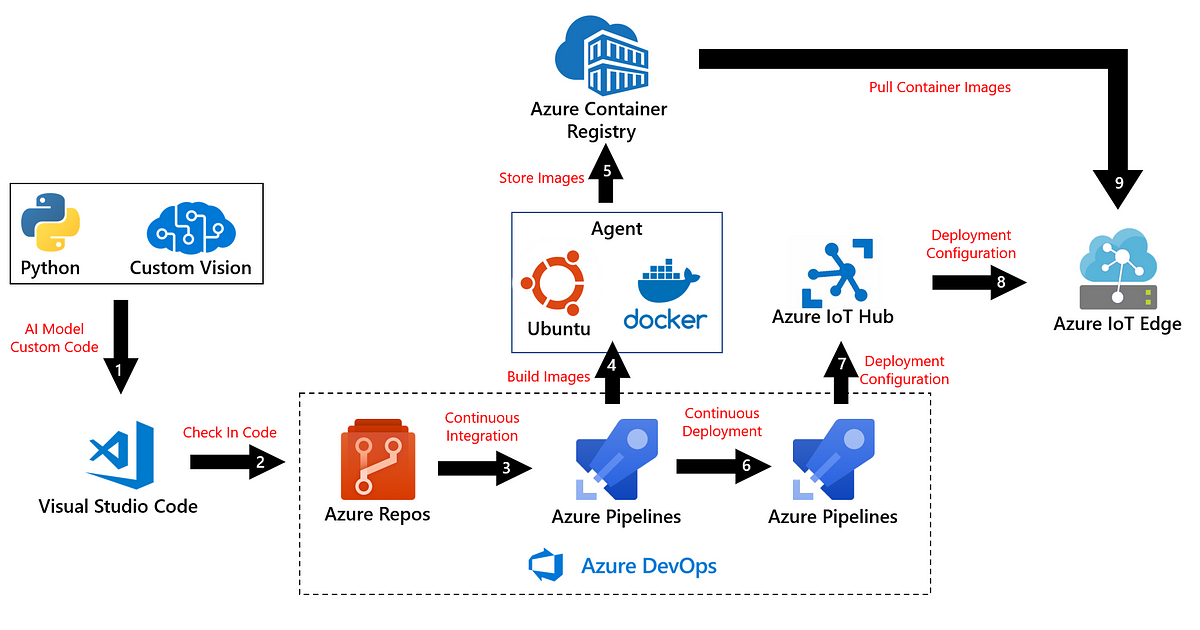Why do you need MQTT in your IoT architecture?
Introduction
Before we dig into what MQTT in IoT is, we require to look at the record of MQTT itself. In 1999, IBM employees innovated MQTT as a messaging agreement. MQTT's initial report helped oil pipeline sensors attach to satellites under the Azure IoT hub
In the following two time sessions since its evolution, MQTT became the go-to messaging compliance handled by IoT devices. In 2014, Oasis allowed MQTT as an ISO volume, thus marking its universal extension as an IoT messaging compliance. Today, MQTT in IoT aids in connecting millions of devices across numerous businesses under the Azure IoT hub.
Akenza.io
While discussing IoT solutions, akenza.io is the self-service
IoT platform providing you to build great IoT products and services with value.
It connects, controls, and handles IoT devices in one place.
Akenza.io gives a cloud-based system that connects everyThing to the Cloud.
Power of MQTT:
MQTT compliances also use an idea called Quality of Service or QoS levels to establish the movement of messages even during convertible connections between appliances under the Azure IoT hub. In the MQTT compliances, there are three QoS phases:
QoS 0: QoS 0 is termed "at most once," in this phase, the message is sent at most once, without any agreement of delivery. This phase is used when appliance connections are fixed and the news is not decisive under the Azure IoT hub.
QoS 1: QoS 1 is termed "at least once," in this phase, the message is sent constantly until the receiver authenticates the delivery. This phase delivers powerful messages whose delivery must be approved under the Azure IoT hub.
QoS 2: Also termed "exactly once," the message is sent only once in this phase. Approved delivery requires technical integration between sender and receiver; thus, this level is more energy-consuming than the other two phases.
Significance of MQTT
MQTT protocol is necessarily a lightweight IoT agreement with considerable significance:
Lightweight and systematic
MQTT protocol asks for a minimal amount of code and consumes notably low power. The MQTT compliance is thus energy-efficient and easy to install for millions of appliances under the Azure IoT hub.
Connecting gadgets during irresponsible networks
MQTT in IoT handles QoS stages to ensure certified information delivery to receivers, even when links between devices are deceptive under the Azure IoT hub.
Allowing communication between the Cloud and appliances
MQTT agreement for IoT establishes the speedy connection between cloud servers and IoT appliances in remote regions.
Last will review
If an IoT device disjoins unexpectedly, the MQTT protocol applies the last will promote to broadcast an active message to other IoT devices in the systems under the Azure IoT hub.
Considerable programming base
MQTT has substantial support in programming expressions such as Python, making it easy for developers to handle under the Azure IoT hub.
Details about MQTT:
Manufacturing
MQTT IoT projects in manufacturing allow vehicle theft protection, vehicle observing, and remote preservation.
Management
One of the top MQTT agreements in the IoT example is in the management sector. MQTT IoT hubs relish Airtel IoT to follow freight vehicles and give real-time perceptions of freight safety and developments under the Azure IoT hub.
Power
IoT MQTT panels in the power sector cooperate to build a more innovative energy framework and optimize consumer power utilization.
Home mechanization
IoT dashboards use MQTT to handle home devices immediately with our phones.
Advantages of MQTT:
The MQTT protocol architecture's insubstantial properties and
minimum overhead support ensure smooth data communication with low bandwidth
and reduce the charge on the CPU and RAM.
The contending protocols of MQTT are as under:
●
Systematic data
communication and quick to execute due to its being a delicate protocol;
●
Low network usage due
to decreased data packets;
●
Frequent distribution
of facts;
●
Successful execution
of remote sensing and power;
●
Fast, regular message
delivery;
●
It uses small amounts
of energy, which is applicable for the connected devices; and
● Evaluate network bandwidth.
Need of MQTT in IoT architecture?
Because MQTT clients are small, they require minimal resources and thus can be used on small microcontrollers, according to MQTT.org. For optimizing network bandwidth, MQTT headers are small. Plus, MQTT "can scale to connect with millions of IoT devices," according to the organization under the Azure IoT hub.
As a result, MQTT is one of the most commonly used protocols in IoT and IIoT infrastructure – for example, for utility industries to efficiently transmit data between their services and their customers and devices.
Examples of MQTT use in IoT are as follows:
Smart metering
The MQTT protocol can transmit data with guaranteed message delivery to provide accurate meter readings in real-time. It helps make billing more accurate under the Azure IoT hub.
Gathering ambient sensor data
Sensors in remote environments are often low-power devices, so MQTT is a good fit for IoT sensor buildouts with lower-priority data transmission needs under the Azure IoT hub.
Billing systems
MQTT helps eliminate duplicate or lost message packets in
billing or invoicing under the Azure IoT hub.





Post a Comment